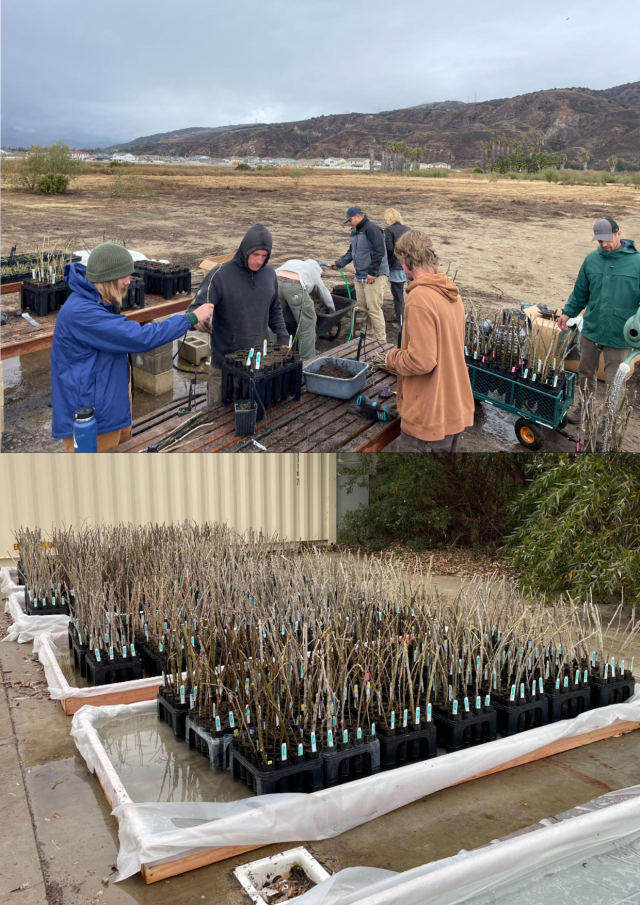
Riparian restoration along Santa Clara River
Riparian restoration is important for a variety of reasons including ensuring healthy waterways and creating outdoor space for local communities. Historically, restorationists use local seed and plant sources for restoration, but climate change may require finding the populations that are best suited to deal with changing environment conditions. In southern California, some of the primary climate change stresses include drought and heat. But which populations are best suited to deal with drought and heat? Do stress-tolerant traits exist due to genetic differences among populations (local adaptation) and/or can they respond to different environments (plasticity)? This project explores these questions through the use of a common garden in Fillmore, CA planted with populations of Fremont cottonwood (Populus fremontii), black cottonwood (Populus trichocarpa), and red willow (Salix laevigata) that span climate and elevation gradients.
Jan 2023 Update: Cottonwood and willow branches were collected for outplanting (yes, these species are capable of resprouting from branches!) into the common garden, which will occur in February/March of 2023. It was a very large and fun group effort! All of the rain this winter should set us up for lots of survival and outplanting success!